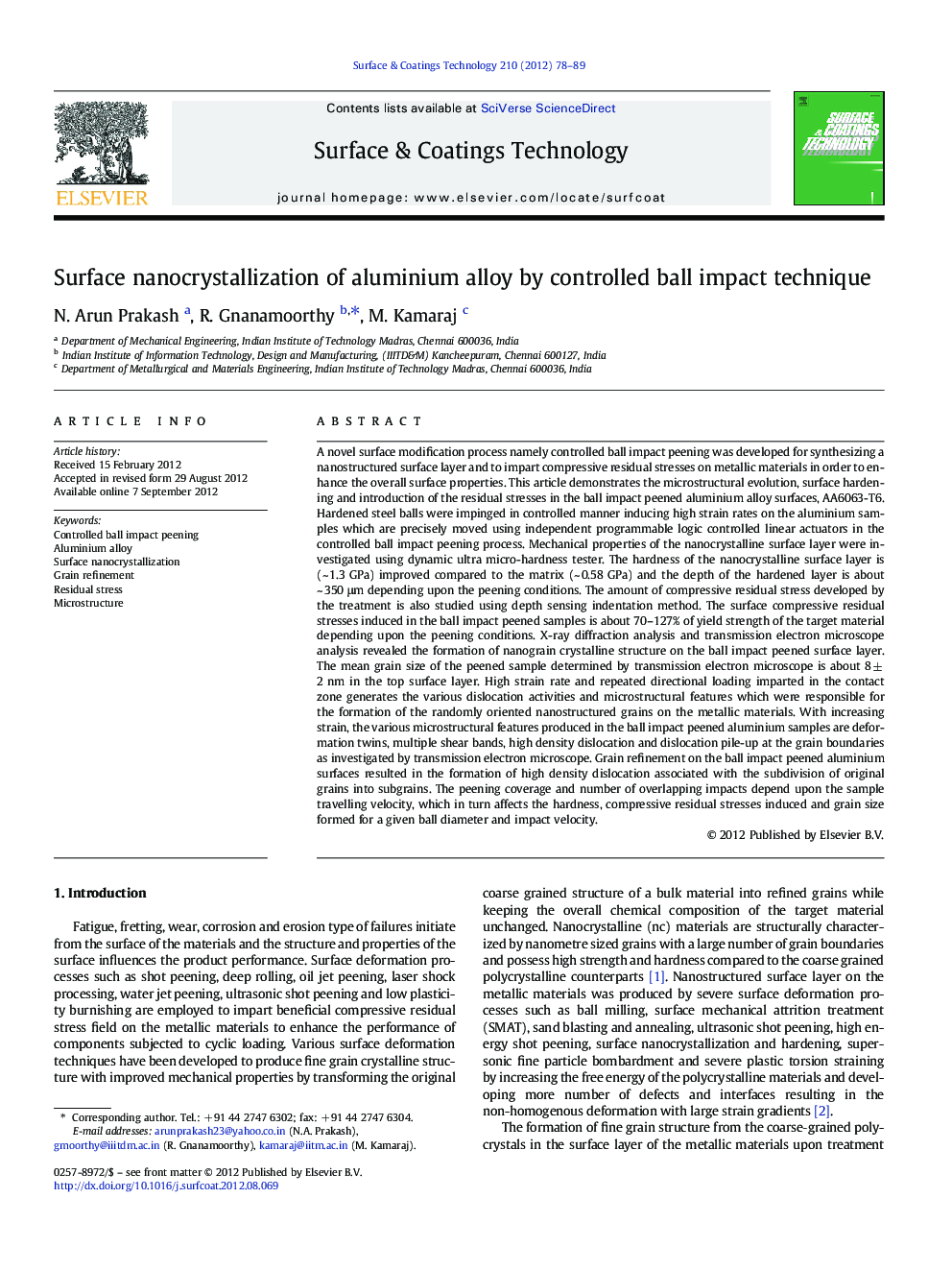| Article ID | Journal | Published Year | Pages | File Type |
|---|---|---|---|---|
| 1658285 | Surface and Coatings Technology | 2012 | 12 Pages |
A novel surface modification process namely controlled ball impact peening was developed for synthesizing a nanostructured surface layer and to impart compressive residual stresses on metallic materials in order to enhance the overall surface properties. This article demonstrates the microstructural evolution, surface hardening and introduction of the residual stresses in the ball impact peened aluminium alloy surfaces, AA6063-T6. Hardened steel balls were impinged in controlled manner inducing high strain rates on the aluminium samples which are precisely moved using independent programmable logic controlled linear actuators in the controlled ball impact peening process. Mechanical properties of the nanocrystalline surface layer were investigated using dynamic ultra micro-hardness tester. The hardness of the nanocrystalline surface layer is (~ 1.3 GPa) improved compared to the matrix (~ 0.58 GPa) and the depth of the hardened layer is about ~ 350 μm depending upon the peening conditions. The amount of compressive residual stress developed by the treatment is also studied using depth sensing indentation method. The surface compressive residual stresses induced in the ball impact peened samples is about 70–127% of yield strength of the target material depending upon the peening conditions. X-ray diffraction analysis and transmission electron microscope analysis revealed the formation of nanograin crystalline structure on the ball impact peened surface layer. The mean grain size of the peened sample determined by transmission electron microscope is about 8 ± 2 nm in the top surface layer. High strain rate and repeated directional loading imparted in the contact zone generates the various dislocation activities and microstructural features which were responsible for the formation of the randomly oriented nanostructured grains on the metallic materials. With increasing strain, the various microstructural features produced in the ball impact peened aluminium samples are deformation twins, multiple shear bands, high density dislocation and dislocation pile-up at the grain boundaries as investigated by transmission electron microscope. Grain refinement on the ball impact peened aluminium surfaces resulted in the formation of high density dislocation associated with the subdivision of original grains into subgrains. The peening coverage and number of overlapping impacts depend upon the sample travelling velocity, which in turn affects the hardness, compressive residual stresses induced and grain size formed for a given ball diameter and impact velocity.
► Controlled ball impact peening is developed for generation of nanocrystalline structure. ► The process induces compressive residual stress with significant surface hardening. ► The surface hardness increased ~ 67–122% depending on the sample travelling velocity. ► The mean grain size is about 8 ± 2 nm in the top treated surface layer. ► Surface strengthening is due to various dislocation activities and grain refinement.
